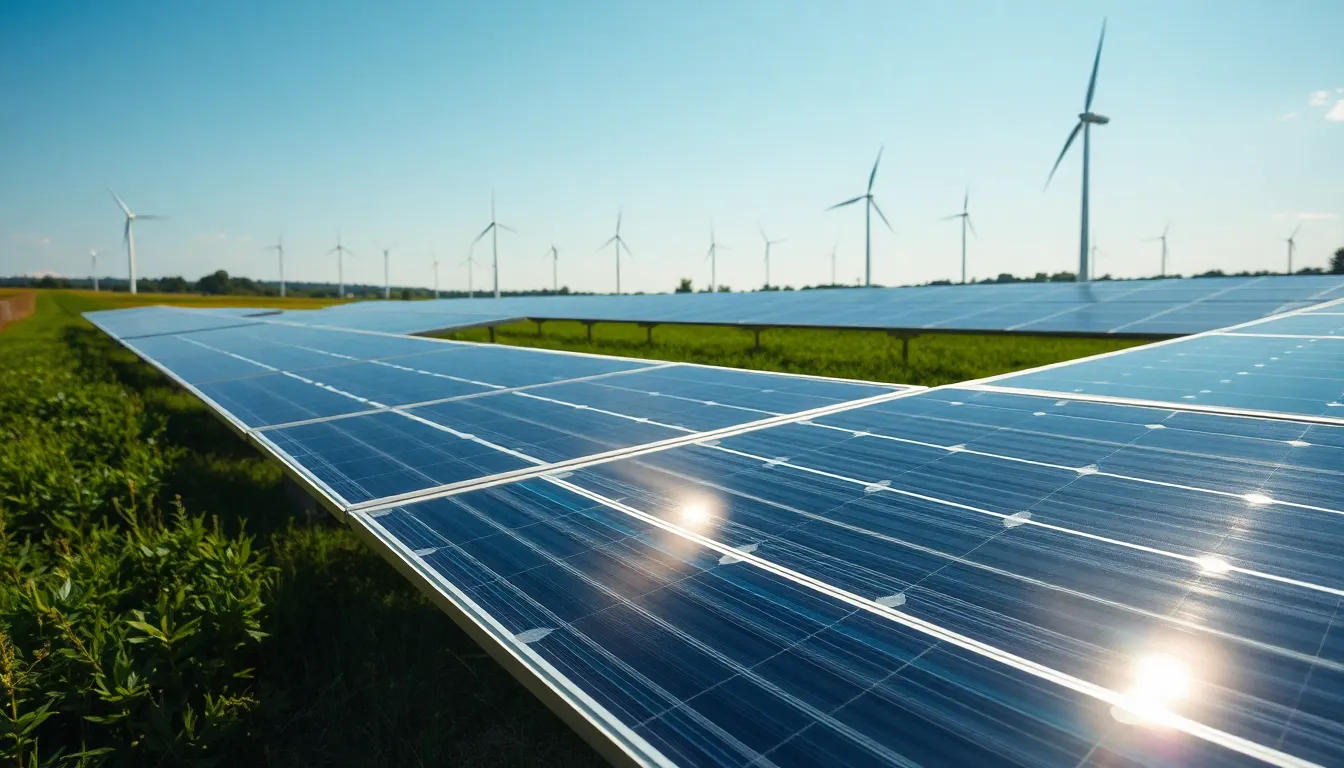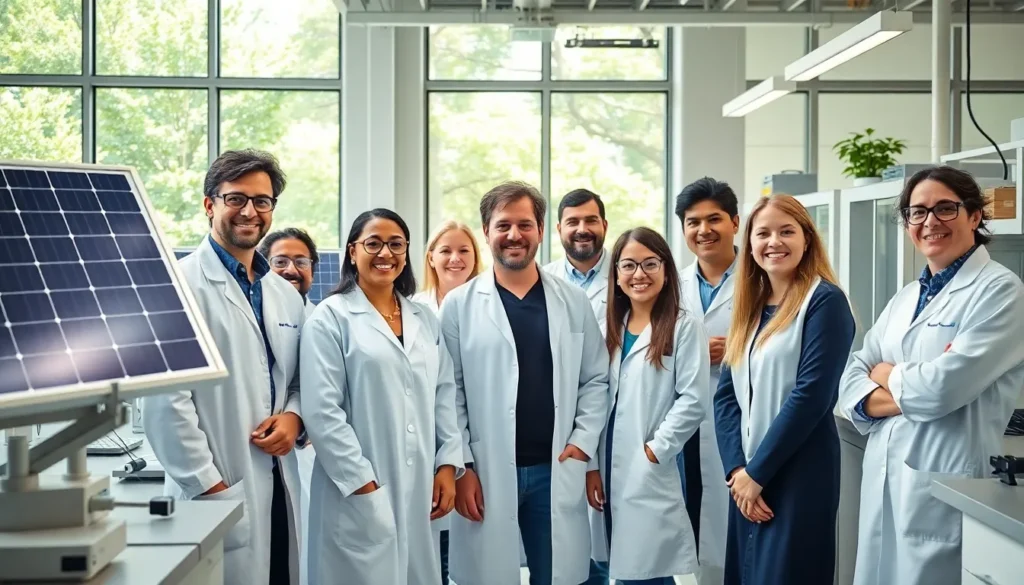Table of Contents
ToggleAs the world grapples with climate change and resource depletion, clean technology innovation emerges as a beacon of hope. This dynamic field combines creativity and sustainability, driving advancements that promise to transform industries and improve lives. From renewable energy solutions to waste reduction techniques, clean technology is reshaping the way society interacts with the environment.
Innovators are harnessing cutting-edge research and development to create eco-friendly alternatives that not only reduce carbon footprints but also enhance efficiency. With governments and businesses increasingly prioritizing sustainable practices, the momentum behind clean technology is stronger than ever. Understanding these innovations is crucial for anyone looking to navigate the future of energy, transportation, and manufacturing.
Overview Of Clean Technology Innovation
Clean technology innovation encompasses the development and implementation of sustainable solutions that minimize environmental impact while maximizing resource efficiency. This field primarily focuses on renewable energy sources, such as solar, wind, and hydropower, which play crucial roles in reducing reliance on fossil fuels.
Key advancements in clean technology include:
- Energy Storage Solutions: Innovations in battery technology, like lithium-ion and solid-state batteries, enhance energy efficiency and reliability for renewable energy systems.
- Smart Grid Technologies: Smart grids optimize electricity distribution by utilizing real-time data, improving energy management, and reducing waste.
- Carbon Capture and Storage (CCS): CCS technology captures carbon dioxide emissions from industrial processes, preventing greenhouse gases from entering the atmosphere.
- Sustainable Transportation: Electric vehicles (EVs) and advancements in biofuels contribute to lower emissions and promote cleaner air.
- Water Purification Technologies: Innovations, such as membrane filtration and solar disinfection, improve access to clean water and enhance sanitation efforts.
Investments in clean technology innovation not only foster economic growth but also encourage sustainable practices across industries. By leveraging these advancements, organizations can reduce their carbon footprints while meeting ever-evolving regulatory requirements and consumer expectations.
Key Areas Of Clean Technology

Clean technology encompasses several key areas that focus on sustainability and efficiency. These innovations contribute significantly to reducing environmental impacts while enhancing resource management.
Renewable Energy Sources
Renewable energy sources play a vital role in clean technology. Key options include:
- Solar Power: Solar panels convert sunlight into usable electricity, reducing reliance on fossil fuels.
- Wind Energy: Wind turbines harness wind power to generate electricity, offering a clean alternative to conventional energy sources.
- Hydropower: Electricity generated from flowing water, typically through dams, provides a reliable and sustainable energy source.
- Geothermal Energy: Utilizing heat from the Earth’s core for energy production offers a consistent and low-emission option.
- Biomass Energy: Organic materials are converted into energy, reducing waste and leveraging renewable resources.
Energy Efficiency Solutions
Energy efficiency solutions significantly improve energy use across various sectors. Important elements include:
- Smart Building Technologies: These systems utilize sensors and automation to optimize energy consumption in commercial and residential spaces.
- LED Lighting: Energy-efficient lighting options utilize less electricity and have a longer lifespan compared to traditional bulbs.
- High-Efficiency Appliances: Devices designed to consume less energy while maintaining performance reduce overall energy demands.
- Building Insulation: Improved insulation techniques enhance energy conservation by minimizing heat loss in structures.
- Energy Management Systems: Software that tracks and optimizes energy usage helps organizations reduce costs and improve efficiency.
Water Purification Technologies
- Reverse Osmosis: This filtration method effectively removes contaminants from water, ensuring high-quality drinking water.
- Ultraviolet Purification: Utilizing UV light to destroy bacteria and viruses in water offers a chemical-free purification solution.
- Activated Carbon Filtration: This method removes impurities and toxins, enhancing water quality through adsorption processes.
- Membrane Filtration: Techniques like microfiltration and ultrafiltration provide effective removal of suspended solids and pathogens.
- Desalination: Converting seawater into fresh water through various processes addresses water scarcity in coastal regions.
Impact Of Clean Technology Innovation
Clean technology innovation significantly impacts environmental sustainability and economic growth. These advancements pave the way for a cleaner planet and enhanced economic opportunities.
Environmental Benefits
Clean technology innovations reduce greenhouse gas emissions and mitigate climate change effects. Technologies like solar panels and wind turbines generate energy without emitting harmful pollutants. Carbon capture and storage (CCS) systems capture CO2 emissions from industrial processes, preventing them from entering the atmosphere. Smart water purification systems ensure safe drinking water, addressing scarcity and health concerns. Sustainable practices in agriculture further promote biodiversity and soil health while decreasing chemical usage. These innovations foster ecosystem restoration and enhance air quality, significantly benefiting public health and the environment.
Economic Implications
Investments in clean technology drive economic growth by creating jobs and stimulating new markets. The clean energy sector has generated over 11 million jobs globally, with expectations for continued growth. Innovative technologies increase efficiency, leading to cost savings for businesses and consumers. Adoption of energy-efficient equipment reduces operating costs, improving profit margins. Furthermore, governments incentivize clean technology investments through subsidies and tax credits, encouraging businesses to shift towards sustainable practices. As consumer demand for eco-friendly products rises, companies embracing clean technology remain competitive, resulting in long-term economic stability and resilience.
Challenges In Clean Technology Adoption
Various challenges hinder the widespread adoption of clean technologies. Addressing regulatory hurdles and financial barriers becomes essential for facilitating innovation and deployment.
Regulatory Hurdles
Regulatory hurdles pose significant obstacles to clean technology adoption. Compliance with diverse standards can delay project approvals. Inconsistent regulations across regions create confusion for businesses navigating the compliance landscape. Additionally, lengthy permitting processes can hamper the speed of innovation and implementation, discouraging investment. Governments must streamline regulations and create more uniform standards to foster a supportive environment for clean technology initiatives.
Financial Barriers
Financial barriers limit clean technology expansion. High initial capital costs associated with new technologies can deter businesses from investing. Limited access to funding options restricts many startups from entering the clean tech market. Furthermore, traditional financing models often fail to accommodate the unique needs of clean tech projects. Encouraging investment through government grants, tax incentives, and innovative financing mechanisms can significantly enhance access to capital, promoting wider adoption of sustainable solutions.
Clean technology innovation stands at the forefront of the battle against climate change and resource depletion. As societies increasingly prioritize sustainability, these advancements offer a pathway to a greener future. By embracing renewable energy solutions and enhancing resource efficiency, industries can significantly reduce their environmental impact.
Investment in clean technologies not only drives economic growth but also fosters healthier communities. While challenges remain, the commitment to overcoming regulatory and financial barriers is crucial. The future of clean technology depends on collaboration between governments, businesses, and consumers, paving the way for a sustainable economy that benefits all.







